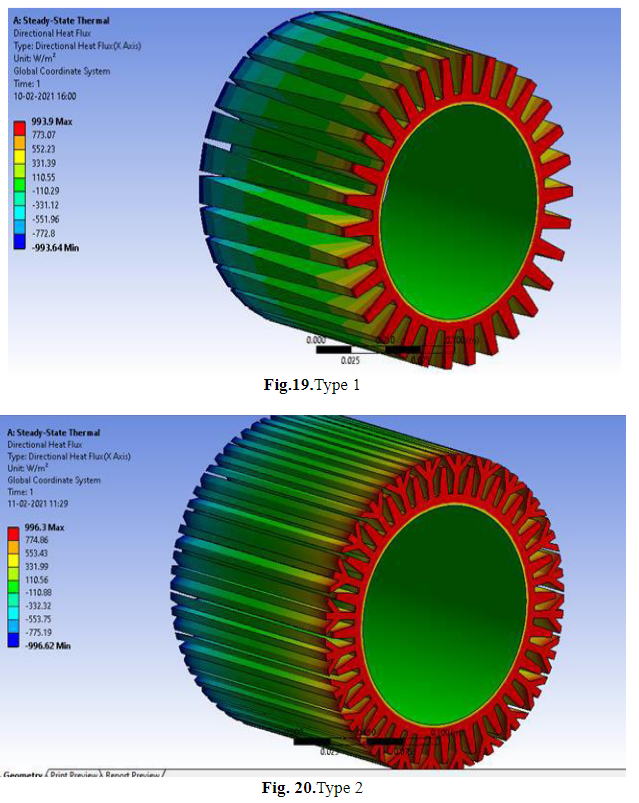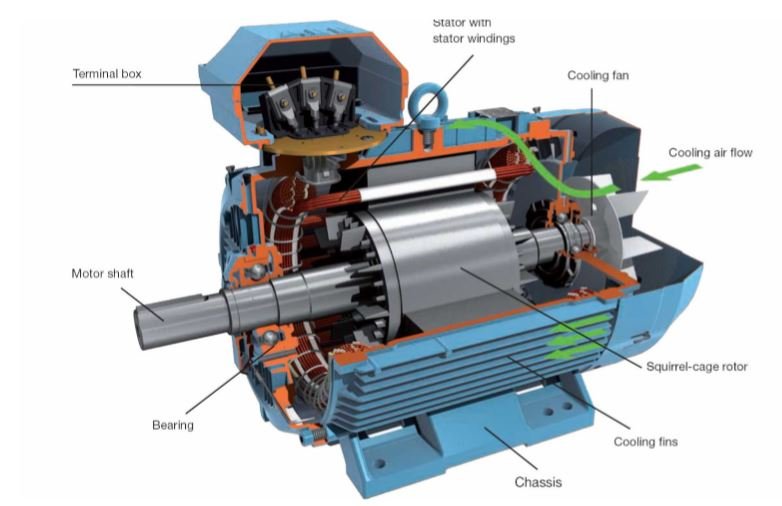Introduction

Electric motors have become the cornerstone of modern engineering, powering everything from electric vehicles to industrial machinery. Maximizing their efficiency is paramount for sustainable and effective use. In this article, we delve into the world of electric motor flow optimizations, exploring techniques and strategies to enhance their performance and energy efficiency.
The Heart of Electric Mobility: Understanding Electric Motors

Electric motors are the workhorses that convert electrical energy into mechanical power, driving a wide range of applications. To improve their efficiency, engineers focus on various factors, including minimizing losses due to heat, friction, and, notably, optimizing the flow of air or coolant within the motor. We’ll explore how flow optimizations play a pivotal role in achieving this goal.
● Electric Motors: The Core Propulsion System in Electric Vehicles (EVs)
● Types of Electric Motors: Brushed DC, Brushless DC, Induction, and Synchronous
● Operation Principles: Electromagnetic Fields and Rotational Motion in Motors
● Power-to-Weight Ratio: How Motor Efficiency Influences Vehicle Performance
● Torque Characteristics: Instantaneous and High Starting Torque in Electric Motors
● Regenerative Braking: How Electric Motors Act as Generators to Recover Energy
● Inverter Technology: Converting DC Power from the Battery to AC Power for the Motor
● Cooling Systems: Ensuring Optimal Operating Temperatures for Electric Motors
● Motor Placement: Considerations for Front, Rear, and All-Wheel Drive Configurations
● Advancements in Motor Technology: High-Efficiency Designs for Next-Generation EVs
Flow Dynamics: Unraveling the Science
Efficient flow management is essential for keeping electric motors operating within their ideal temperature range. This section provides a comprehensive overview of flow dynamics within electric motors, explaining how air or coolant circulates to dissipate heat generated during operation. We’ll also discuss the impact of flow patterns on motor efficiency.
● Introduction to Flow Dynamics: Understanding the Behavior of Fluids and Gases
● Principles of Fluid Mechanics: Study of Forces, Pressures, and Velocity in Fluids
● Types of Flows: Laminar, Turbulent, and Transitional Flows Explained
● Bernoulli’s Principle: Relationship between Pressure, Velocity, and Elevation in Fluid Flow
● Reynolds Number: Determining Flow Regimes and Transition from Laminar to Turbulent
● Applications in Engineering: Aerospace, Automotive, HVAC, Hydraulic Systems, etc.
● Computational Fluid Dynamics (CFD): Numerical Simulation for Predicting Fluid Behavior
● Boundary Layers: Layers of Fluid Near Solid Surfaces and Their Influence on Flow
● Lift and Drag Forces: Aerodynamic Principles in Fluid Dynamics and Wing Design
● Future Trends: Advances in Flow Dynamics for Aerospace, Automotive, and Renewable Energy.
Air Cooling vs. Liquid Cooling: Choosing the Right Approach
Two primary methods are employed for cooling electric motors: air cooling and liquid cooling. Each comes with its own set of advantages and considerations. We’ll delve into the pros and cons of both approaches, highlighting scenarios where one may be more suitable than the other. Making the right choice can significantly impact the overall performance and longevity of the motor.
Optimizing Fan Design: Improving Airflow Efficiency
For air-cooled electric motors, the design of the cooling fan is crucial. It dictates the rate at which air flows through the motor, affecting its ability to dissipate heat effectively. Engineers employ various techniques, such as blade design, fan placement, and shroud optimization, to enhance airflow efficiency. This section delves into the intricacies of fan design for electric motors.
● Importance of Fan Efficiency: Enhancing Ventilation and Cooling Systems
● Blade Geometry: Profile, Pitch, and Count for Efficient Air Movement
● Material Selection: Balancing Strength, Weight, and Heat Resistance in Fan Components
● Motor Efficiency: Matching Motor Characteristics with Fan Performance Requirements
● Noise Reduction Techniques: Minimizing Sound Output for Quieter Operation
● Computational Fluid Dynamics (CFD): Simulating Airflow for Fan Design Optimization
● Fan Curve Analysis: Understanding Performance Characteristics under Varying Conditions
● Integration with Control Systems: Variable Speed Drives for Adaptive Fan Operation
● Fan Testing and Validation: Ensuring Real-world Performance Meets Design Expectations
● Future Innovations: Advances in Materials, Motors, and Blade Design for Next-Generation Fans.
Coolant Circulation and Heat Exchangers: Liquid Cooling
Strategies
In liquid-cooled systems, optimizing coolant circulation is paramount. Properly designed channels and heat exchangers ensure that coolant efficiently absorbs and dissipates heat from the motor. We’ll explore how engineers utilize advanced computational simulations and experimental testing to fine-tune the design of liquid cooling systems, maximizing their effectiveness.
Advanced Materials and Thermal Coatings: Pushing Efficiency
Boundaries
Innovations in materials and coatings play a crucial role in improving the thermal performance of electric motors. Heat-resistant materials and coatings can enhance both the efficiency and longevity of the motor. We’ll discuss how these advancements are leveraged to achieve higher operating temperatures and greater overall efficiency.
● Cutting-Edge Materials: Alloys, Composites, and Ceramics Engineered for High Temperatures
● Heat Resistance and Thermal Conductivity: Key Properties in Advanced Material Selection
● Thermal Barrier Coatings (TBCs): Insulating Surfaces from High Temperatures
● Ablative Materials: Sacrificial Layers that Dissipate Heat in Extreme Environments
● Nanocomposites: Harnessing Nanotechnology for Enhanced Thermal Efficiency
● Multilayered Coatings: Strategic Application of Materials for Maximum Protection
● Aerospace Applications: Lightweight Materials for Spacecraft and Hypersonic Vehicles
● Energy Industry: Materials and Coatings for Efficient Power Generation and Turbines
● Thermal Protection Systems in Aerospace: Safeguarding Vehicles during Reentry
● Future Prospects: Research and Development in Advanced Thermal Materials and Coatings.
Conclusion: Pioneering Efficiency in Electric Motor Design
Flow optimizations represent a cornerstone of electric motor design, enabling engineers to push the boundaries of efficiency and performance. By fine-tuning airflow patterns, selecting the right cooling method, and leveraging advanced materials, electric motors can operate more effectively and sustainably. As technology continues to advance, these flow optimization strategies will play a central role in shaping the future of electric mobility and industrial
applications.
